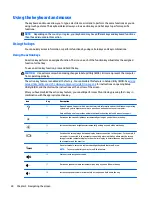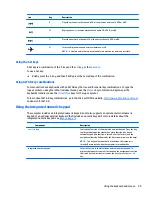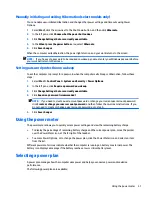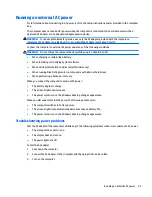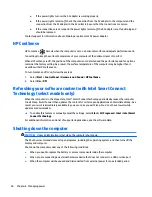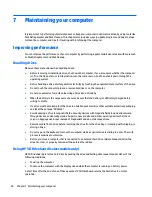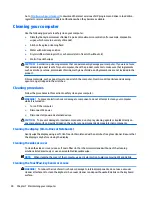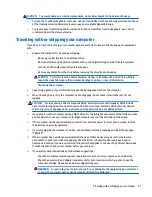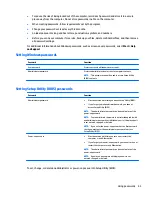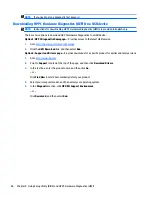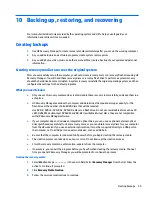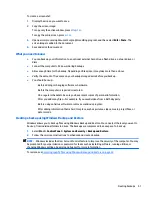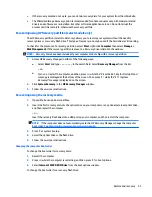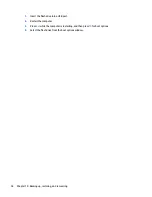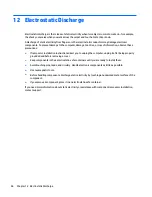
CAUTION:
To prevent damage to internal components, do not allow liquids to drip between the keys.
●
To clean the TouchPad, keyboard, or mouse, use a soft microfiber cloth or a chamois moistened with one
of the cleaning solutions listed previously or use an acceptable disposable wipe.
●
To prevent keys from sticking and to remove dust, lint, and particles from the keyboard, use a can of
compressed air with a straw extension.
Traveling with or shipping your computer
If you have to travel with or ship your computer, here are some tips to keep in mind to keep your equipment
safe.
●
Prepare the computer for traveling or shipping:
◦
Back up your information to an external drive.
◦
Remove all discs and all external media cards, such as digital storage cards, from the computer.
◦
Turn off, and then disconnect all external devices.
◦
Remove any media from the drive before removing the drive from a drive bay.
CAUTION:
Perform this action before shipping, storing, or traveling with a drive. This will help
reduce the risk of damage to the computer, damage to a drive, or loss of information.
◦
Shut down the computer.
●
Take along a backup of your information. Keep the backup separate from the computer.
●
When traveling by air, carry the computer as hand luggage; do not check it in with the rest of your
luggage.
CAUTION:
Avoid exposing a drive to magnetic fields. Security devices with magnetic fields include
airport walk-through devices and security wands. Airport conveyer belts and similar security devices
that check carry-on baggage use X-rays instead of magnetism and do not damage drives.
●
If you plan to use the computer during a flight, listen for the in-flight announcement that tells you when
you are allowed to use your computer. In-flight computer use is at the discretion of the airline.
●
If the computer will be unused and disconnected from external power for more than 2 weeks, remove
the battery and store it separately.
●
If you are shipping the computer or a drive, use suitable protective packaging and label the package
“FRAGILE.”
●
If the computer has a wireless device installed, the use of these devices may be restricted in some
environments. Such restrictions may apply onboard aircraft, in hospitals, near explosives, and in
hazardous locations. If you are uncertain of the policy that applies to the use of a particular device, ask
for authorization to use your computer before you turn it on.
●
If you are traveling internationally, follow these suggestions:
◦
Check the computer-related customs regulations for each country or region on your itinerary.
◦
Check the power cord and adapter requirements for each location in which you plan to use the
computer. Voltage, frequency, and plug configurations vary.
WARNING!
To reduce the risk of electric shock, fire, or damage to the equipment, do not attempt
to power the computer with a voltage converter kit sold for appliances.
Traveling with or shipping your computer
41


